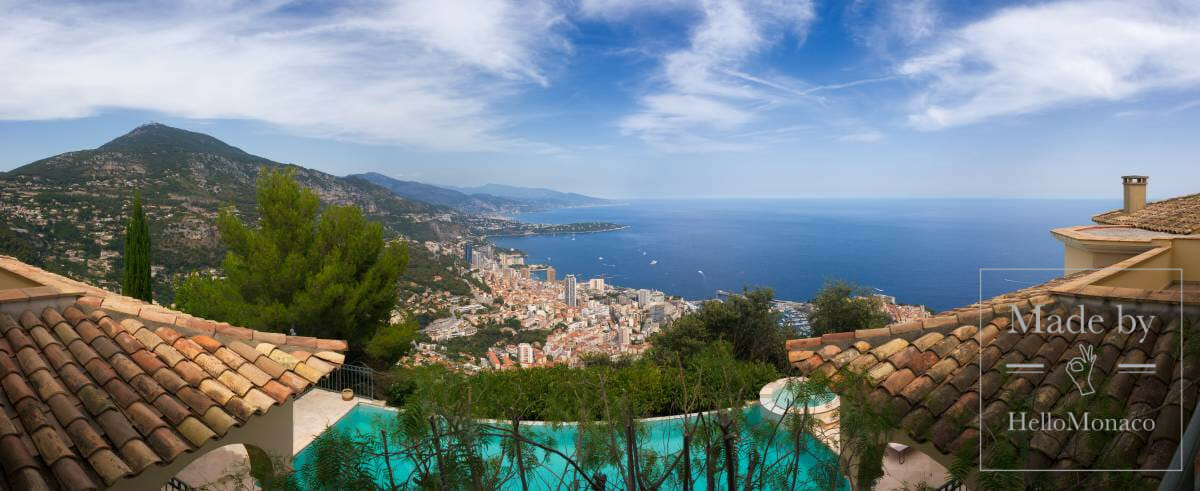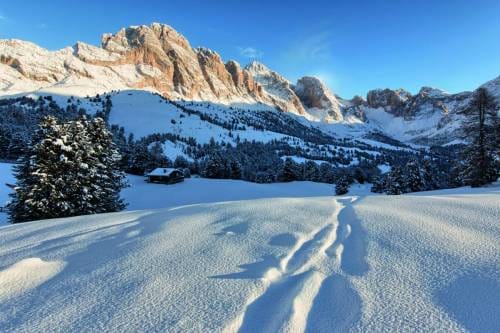Today’s “Monaco Neighbour” is the medieval village of Eze, perched in the mountains between Nice and Monaco. Like a phoenix nest, it rises 427 meters above the peninsula of Saint-Jean-Cap-Ferrat. This very mythical bird is depicted on the coat of arms of Eze along with the saying “Isis Moriendo Renascor” which means, “When dying, I am reborn”.
This place is hardly known by tourists, or even by French people. The biggest fans of extreme sports and adventure climb to Eze up a steep winding path. Their perseverance, however, is well rewarded and surpasses all expectations. Travelers will be welcomed by the dizzying views of the Mediterranean and a town as picturesque as Walt Disney cartoons.
If Disney comes to mind while you are in Eze, this is not by chance. The famous cartoon maker enjoyed coming here and creating sketches for his future fairy-tale castles. But the history of Eze dates back to many centuries before…
History of Eze
The village owes its name to an ancient Egyptian goddess, Isis.
It is in her name that the ancient Phoenicians who colonized these lands consecrated their temple. Isis is one of the greatest goddesses of Antiquity, an Egyptian ideal of femininity and motherhood. She was a patron of all slaves and oppressed, but also listened to the prayers of the rich, the aristocrats and the rulers.

Man first set foot on the territory of modern Eze in the 19-20th centuries B.C. In later times, this land was owned by the Romans and the Moors. It is believed that the town was mainly built under the reign of the Roman emperors Augustus and Flavius.
By 1383, Eze was controlled by the Savoy dynasty that secured the town with new fortifications. This precaution was justified by the proximity to the large city of Nice. At various instances, the power of the House of Savoy extended to other territories, including the city of Vaud. During the next few centuries, Eze repeatedly lived through a few disturbances. In the mid 16th century it changed ownership, passing from the French to the Turks. In 1706, Louis XIV completely destroyed its fortress walls during the War for the Spanish heritage. Only in 1860 Eze officially became part of France by a unanimous decision of its inhabitants.
The village is first mentioned in the 4th century records as “ab Avisione”. Over centuries its name took different forms of Esa, Eza, Isia, Isie. Once the territory passed under the control of the House of Savoy in 1388, it acquired its modern name in the Provençal translation.
As of today, the commune holds about 3.000 inhabitants. Although small, Eze has its own newspaper “Vuesd’Eze”. It also holds cultural events, festivals, various religious holidays and the Harmony Festival.

The medieval town still remembers one of its most extraordinary and famous inhabitants, the German philosopher Friedrich Nietzsche, who came to the south of France to cheer himself up. It was here, in 1885, that Nietzsche wrote the final part of his book “S Zarathustra.” The path that the great philosopher took daily down to the sea now bears his name (Chemin de Nietzsche). It is only accessible by foot; the walk up will take you about an hour and a half. Travellers can leave their car at one of the two parking lots at the entrance to the town. One of them is free of charge, but is always very busy.
Before venturing into the labyrinth of its narrow streets, visitors pass through the double 14th century fortress gates. This is the only entrance to the old city and the only part of the fortress that was preserved after Louis XIV attack in the early 18th century.
These picturesque streets will take you to the highest point of the town, where you’ll find another local landmark, an exotic garden built on the ruins of an ancient castle. Its main attraction is a 13-meter cactus, with a total weight of a ton. This giant plant outshines the less colourful agaves and succulents. Locals look after the plants, caringly placing sunbeds on one of the garden’s terraces. A tired traveller can thus relax and admire the mountain slopes that he has just conquered. This park of unique exotic plants was laid in 1949. You can enjoy a beautiful panorama of Saint-Jean-Cap-Ferrat and the coast from here. One of the observation platforms even reveals the outlines of Corsica.

The oldest building in Eze is the Church of the White Penitents or the Church of the Holy Cross, built in 1306. Back in the times, the White Brotherhood was helping the unfortunate and the leper. The Brotherhood actually still exists in our days. Small and unpretentious from the outside and incredibly atmospheric inside, the church attracts visitors for its two relics: an ancient Catalan crucifixion with a smiling Christ and the statue of the Virgin Mary with her baby.
The architectural style of the church suggests Genovese influence as the town once belonged to the Republic of Genoa.
The main square is home to another unusual 18th century building – the Church of the Assumption of the Blessed Virgin Mary (Notre Dame de l’Assomption). According to an old legend, the Phoenicians built a temple in this place to honour the goddess Isis, the church still holds the Egyptian cross. In 1974, the French comedian Francis Blanche was buried here. The inscription on his grave says: “Let me sleep, I was created for it” (Laissez-moi dormir, j’etais fait pour ça).
Chateau Eza
The ancient Chateau of Eze (Château Eza) is located in the very heart of the stone city. It was built four centuries ago in the old part of the village. Until 1983, it bore the name of the “Castle of the Swedish Prince.” From 1920 and for the next 30 years, it was the residence of his Royal Highness, the Swedish Prince Guillaume. As a writer, he created most of his works within the walls of this building. After a thorough restoration in the second half of the 20th century, the castle passed into the ownership of a Swiss, Andre Rocha.

Nowadays, Château Eza, with its old stone walls bearing a rich history, is a 5* hotel. Its restaurant was awarded a Michelin star and is rightly believed to be the gastronomic pearl of the town. Although it does not have a particularly exotic menu (its chef Axel Wagner prefers traditional dishes), real gourmets who are accustomed to good cuisine come here every year. The hotel has 12 rooms and suites, each decorated in a unique style recreating the atmosphere of an ancient castle.
In addition to the Eze Castle, the scenic mountain road of the Moyenne Corniche also hides another attraction – the Chateau of the Golden Goat (Château de Chèvre d’or) that belonged to a Yugoslav violinist Zlatko Balokovic back in the early 20th century. Robert Wolff, who bought the building in 1953, transformed the castle into a restaurant. Over three years, the establishment gained international fame thanks to the arrival of Walt Disney. The hotel turned out to be the 6th stage on the so-called “Road of Happiness” (“La Route du Bonheur”) created by Marcel Tiloy in 1954.

In 1960, following the initiative of the South African Consul of Monaco, Bruno Ingold, “Chèvred’or” officially became a hotel.
Its 18 rooms are booked annually by princes and princesses, politicians and actors. The hotel currently has 38 rooms and suites, eight of them bearing the names of famous Eze residents (Cocteau, Nietzsche and others). The hotel has two Michelin stars restaurant and attracts world-class celebrities with its Mediterranean cuisine. Fabrice Wühlen, who lived in Morocco for several years, is currently the chef of the establishment. Unsurprisingly, the menu has Moroccan notes that only give it more credit.
The hard-to-reach village of Eze is a landmark in itself. Those who love wandering through the cobweb of narrow streets will be greeted by lovely handicraft shops, French souvenirs and perfume boutiques.

How to get to Eze?
The bus from Nice is the most convenient, bringing you right to the entrance of the village.
If you take the Grande Corniche, it is bus line 116 Nice Vauban-Peille;
Via the MoyenneCorniche – bus line 112 Nice Vauban-Beausoleil; bus line 82 Nice Vauban-Eze.
Eze also has a shuttle connecting the three cornices (line 83 departing from Beaulieu-sur-Mer (Beaulieu beach), Eze-sur-Mer, Eze village and further up).
You will not regret the time and effort – it is well worth it.








